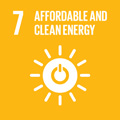- Docente: Angelo Massafra
- Credits: 4
- SSD: ICAR/10
- Language: English
- Moduli: Angelo Massafra (Modulo 1) Angelo Massafra (Modulo 2)
- Teaching Mode: Traditional lectures (Modulo 1) Traditional lectures (Modulo 2)
- Campus: Bologna
- Corso: Second cycle degree programme (LM) in Building Engineering -Architecture (cod. 5697)
-
from Sep 18, 2024 to Dec 19, 2024
Learning outcomes
The course provides knowledge and analysis criteria necessary for the understanding and interpreting the construction techniques of existing buildings, with regard to the technological and architectural aspects of the historic building with a masonry or reinforced concrete load-bearing structure. At the end of course the student will know the methods and criteria to analize the behavioral and architectural state in the existing built environment.
Course contents
The course is part of the integrated course BUILDING RENOVATION WORKSHOP I.C. and aims to provide a theoretical and methodological framework on the topic of building renovation.
It is divided into interrelated learning modules aimed at providing a comprehensive knowledge base on renovation interventions for the built heritage, with an in-depth examination of technical and construction issues.
1. Introduction to building renovation
This module provides an overview of building renovation within the broader context of the architecture, engineering, construction and operations sector. Preliminary knowledge is given about the main building types that characterize the built environment, both from a morphological-functional and historical-construction perspective. Moreover, the basic theoretical principles on buildings' structural and energy behavior are given, with emphasis on the comparison between the performance requirements expected for new constructions and the criticalities commonly experienced in existing buildings.
2. Knowledge of historical construction techniques
Essential content regarding the construction techniques of existing buildings is provided in this module, focusing on the description of typical construction elements such as vertical structures, floors, foundations, and roofs. The contents primarily address masonry buildings, with some references to reinforced concrete construction techniques from the past century.
3. Critical analysis of the built heritage
This module provides knowledge for analyzing the existing buildings' structural and energy vulnerabilities, referring to the theoretical principles mentioned in the introduction module. The most significant structural issues of masonry buildings will be illustrated, with also some references to 20th-century reinforced concrete buildings. Then, the module addresses the energy vulnerabilities of the built heritage.
4. Renovation interventions on existing buildings
The basic notions regarding the theoretical approach and technical interventions for renovating and maintaining the built heritage are provided. The learning module is divided into two parts. The first focuses on the theoretical assumptions guiding subsequent technical intervention choices. The second part concerns the description of intervention methods for building renovation, following a theoretical and operational approach focused on the use of seismic prevention and energy efficiency improvement techniques.
Additionally, during the course, example renovation projects will be illustrated, along with seminar activities on research topics related to the field of built heritage analysis and renovation.
Readings/Bibliography
Slides provided by the professors on Virtuale will be the primary reference for the course.
For generic readings to built heritage renovation and conservation design:
- “Historical building construction design, materials and technology”, Friedman Donald, Norton Company, 1995
- “Structures & construction in historic building conservation”, edited by Michael Forsyth, Oxford, UK; Malden, MA; Blackwell, 2007
- “Understanding historic building conservation”, edited by Michael Forsyth, Oxford, UK; Malden, MA : Blackwell, 2007
- “Materials & skills for historic building conservation”, edited by Michael Forsyth Oxford: Blackwell, 2008
- “How structures work. Design and behavior from bridges to buildings”, Davide Yeomans, Wiley Blackwell, 2nd edition, 2016
More specific references for the various topics and tools will be provided during the course lectures.
Teaching methods
Classroom lessons on the course topics and discussion of detailed aspects.
Assessment methods
Written examination on course topics.
Teaching tools
PPT slides on Virtuale.
Additional tools will be given during the workshop activities.
Office hours
See the website of Angelo Massafra
SDGs


This teaching activity contributes to the achievement of the Sustainable Development Goals of the UN 2030 Agenda.
